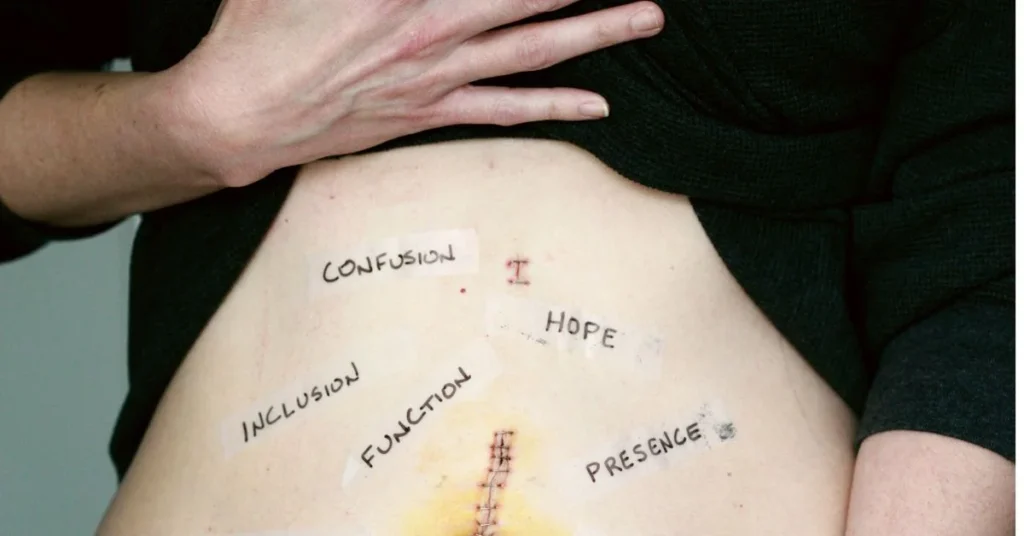BPT Navigating Trauma Life can throw unexpected challenges our way, often leaving us feeling broken and lost. Trauma is a profound experience that can shake your very foundation. It might stem from personal loss, accidents, or even witnessing distressing events. The effects of trauma aren’t just fleeting; they linger in the shadows of our minds and bodies.
But healing is possible. With the right guidance and support, you can navigate through these turbulent waters toward a brighter horizon. This journey encompasses understanding trauma’s intricacies, exploring various healing methods, and fostering resilience along the way.
Join us as we delve into BPT navigating trauma—a comprehensive approach to reclaiming your life after adversity. It’s time to take those first steps towards healing together.
Defining Trauma and its Effects
Trauma can be challenging to define, as it manifests uniquely for each individual. At its core, trauma is any experience that overwhelms a person’s ability to cope. This might include events like abuse, accidents, or natural disasters.
The effects of trauma often extend far beyond the initial event. Many people experience emotional responses such as anxiety, depression, and anger long after the incident has passed. Physical symptoms may also arise—fatigue or unexplained aches are common.
Moreover, trauma can disrupt daily functioning and relationships. Trust erodes; self-worth diminishes. The world may feel unsafe and unpredictable.
Understanding these impacts is crucial in the healing journey. Recognizing how deeply trauma affects our lives paves the way toward reclaiming control and seeking effective support strategies tailored to personal experiences.
The Different Types of Trauma
Trauma can manifest in various forms, each with its own profound impact on an individual’s emotional and psychological state.
Acute trauma arises from a single distressing event, such as an accident or natural disaster. Its effects can be immediate but may linger long after the event has passed.
Chronic trauma occurs over time. This might stem from ongoing abuse, neglect, or living in a highly stressful environment. The cumulative effect can lead to significant mental health challenges.
Complex trauma is often linked to multiple traumatic events experienced during critical developmental periods. It can shape one’s worldview and affect relationships deeply.
Developmental trauma refers specifically to adverse childhood experiences that hinder emotional growth and resilience later in life. Understanding these distinctions allows for tailored healing approaches, paving the way for recovery through appropriate support systems. Each type of trauma requires unique strategies for navigating the path toward healing and wholeness.
The Importance of Seeking Help
Seeking help is a crucial step in the journey of healing from trauma. It’s easy to feel isolated, as if no one understands your pain. However, reaching out can break that cycle of loneliness.
Professional support offers insights and tools you may not have access to on your own. Therapists are trained to navigate the complexities of trauma and can provide tailored strategies for recovery.
Friends and family also play an essential role. Sharing your experiences with trusted loved ones fosters connection and understanding. It’s about finding a safe space where you can express yourself without judgment.
Remember, asking for help doesn’t signify weakness; it demonstrates strength and resilience. Embracing vulnerability allows others to step forward, creating pathways toward collective healing.
Traditional vs Alternative Methods of Healing
Traditional methods of healing often focus on structured approaches. They include therapy sessions, medication, and support groups. These avenues provide measurable outcomes and are backed by research. Many find solace in the familiarity of these practices.
On the other hand, alternative methods embrace a holistic view of healing. Techniques like yoga, acupuncture, or herbal remedies tap into the mind-body connection. They prioritize personal experience and intuition over clinical assessments.
Some people benefit from combining both paths. Traditional therapies can address immediate symptoms while alternative practices promote long-term well-being.
Each person’s journey is unique when bpt navigating trauma. Finding what resonates with you may involve exploring various options until something clicks. The right method can empower individuals to reclaim their narrative on their terms without rigid constraints.
Creating a Safe Support System
Creating a safe support system is essential for anyone bpt navigating trauma. It starts with surrounding yourself with understanding and compassionate individuals. Seek friends or family members who listen without judgement.
Consider joining support groups where shared experiences foster connection. These spaces can offer validation, helping you feel less isolated in your journey.
Trust is key in any relationship, especially when healing from trauma. Be open about your feelings when you’re ready; vulnerability can deepen bonds and strengthen your network of support.
Don’t hesitate to reach out for professional help if needed. Therapists and counselors provide guidance while fostering a nurturing environment.
Remember, it’s vital to set boundaries too. Protecting your emotional well-being ensures that the relationships you cultivate are healthy and uplifting, allowing you to heal more effectively as you navigate this challenging path together.
Mindfulness and Self-Care Practices for Healing
Mindfulness and self-care are essential tools in the journey of healing from trauma. They provide a way to reconnect with yourself, allowing for deeper awareness of your thoughts and feelings.
One effective practice is mindfulness meditation. Just a few minutes each day can help center your mind. Focus on your breath and let distractions pass without judgment.
Self-care extends beyond relaxation techniques. It involves nurturing your body, mind, and spirit through activities that bring you joy. Whether it’s reading, walking in nature, or indulging in a hobby—these moments are vital.
Journaling can also be transformative. Writing down emotions helps to process experiences actively instead of letting them linger unaddressed.
Incorporating these practices into daily life fosters resilience and empowers you to bpt navigating trauma more effectively. Each small step contributes significantly to overall well-being during this healing journey.
Moving Forward: Thriving after Trauma
Emerging from trauma can feel daunting. Yet, it’s possible to not just survive but thrive.
First, recognize small victories. Celebrate the moments you regain control over your life. These achievements build confidence and create a sense of purpose.
Next, explore new interests or hobbies. Engaging in activities that spark joy can redefine your identity beyond the pain you’ve experienced.
Building connections with others who understand your journey is vital. Support groups or communities foster a sense of belonging and validation.
Embrace change as part of growth. Adaptability opens doors to opportunities that may have seemed out of reach before.
Remember that healing is non-linear. Allow yourself grace during setbacks while focusing on progress rather than perfection. Each step forward adds to your resilience and strength on this unique journey toward thriving after trauma.
Conclusion
BPT Navigating Trauma involves understanding its nuances and impacts. Recognizing the different types of trauma is crucial, as it shapes how individuals respond to their experiences. Seeking help should never be underestimated; professional guidance can pave the way for many toward healing.
The choice between traditional and alternative methods of healing offers various pathways for recovery. Each approach has its own merits and may resonate differently with each person. Building a supportive network ensures that no one feels alone in their struggles, providing comfort and encouragement along the way.
Integrating mindfulness and self-care practices can dramatically change one’s perspective on life after trauma. These tools empower individuals to reclaim their sense of peace and well-being amidst chaos.
As people begin to heal, they often find strengths they didn’t know existed within them. Moving forward involves embracing these newfound abilities while creating a fulfilling life beyond past pain.
Understanding bpt navigating trauma isn’t just about facing challenges—it’s about discovering resilience in vulnerability. Healing takes time, but it’s a vital step toward thriving in every aspect of life.






